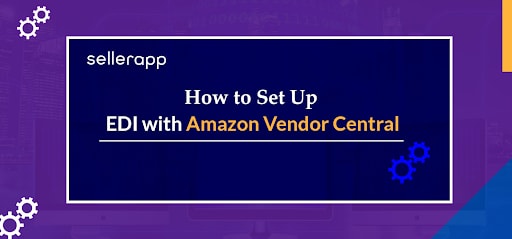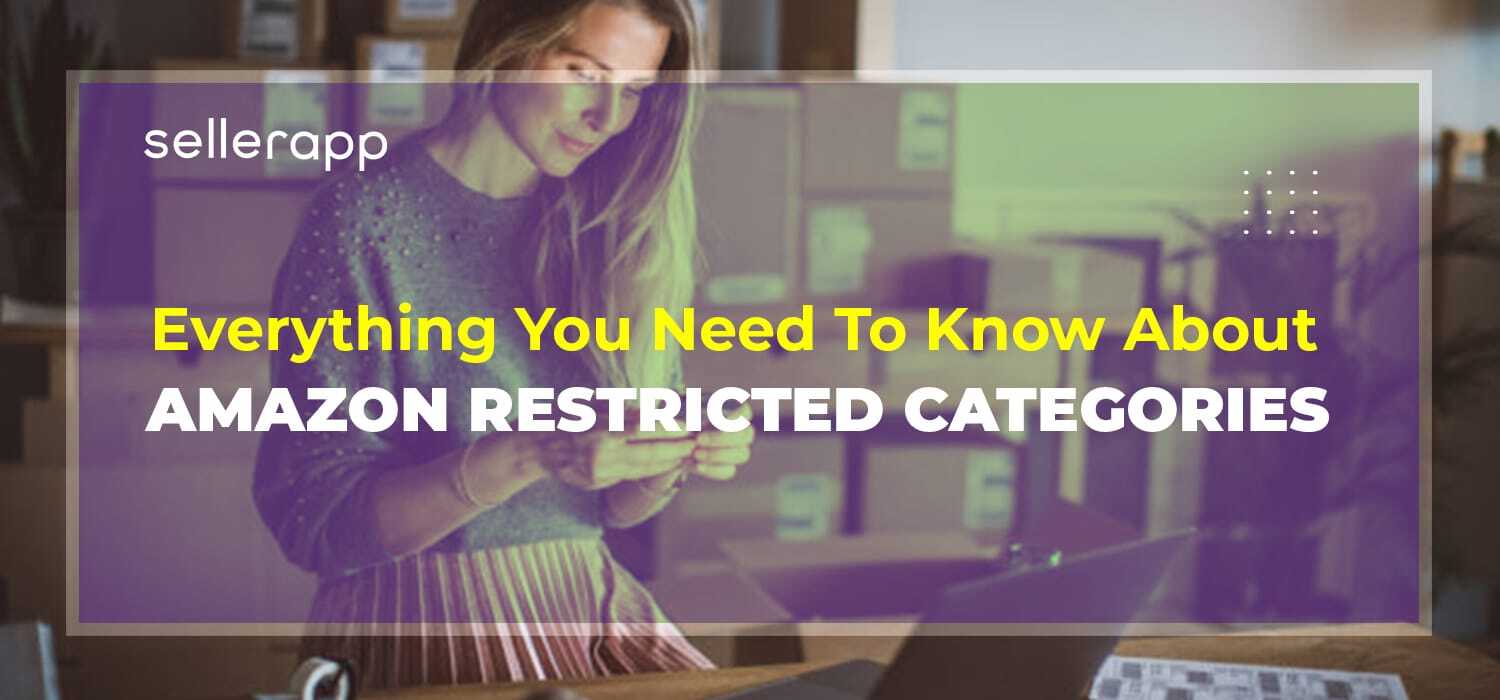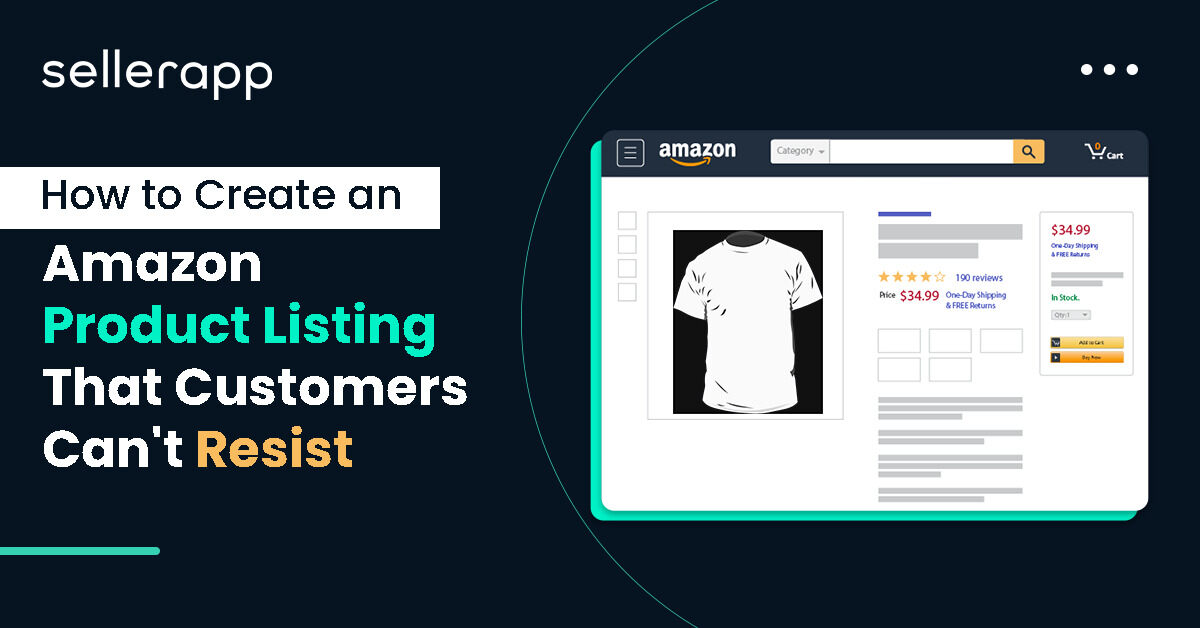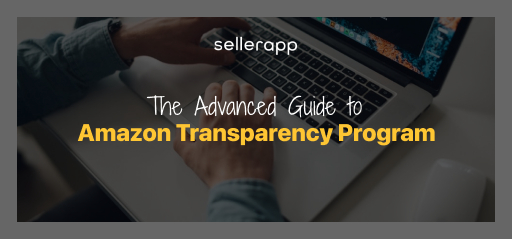How to Set Up EDI with Amazon Vendor Central?

If you are an Amazon vendor who has just been accepted onto the Amazon Vendor Direct Fulfillment program or are considering to be a part of it, it’s time to unravel some crucial information about integration and its overall process.
An invitation to the Amazon Vendor Central platform is nothing but a coveted opportunity that has the power to boost your conversions and scale your business in no time. However, no good thing comes without a challenge – Amazon has set stringent vendor criteria that need to be met for EDI or API integration. This often takes sellers into the deep waters of EDI integration and its pros and cons.
Amazon Vendor has been leveraging Electronic Data Interchange (EDI) for a long time now to exchange information about purchase orders, shipments, and invoices.
In Q2 2020, Amazon Vendor also introduced a new vendor API, which is a good fit for Direct Fulfillment Vendors, although these two systems have similar benefits and functionality.
In this article, we will provide a macro analysis of Amazon Vendor Central EDI and how to set it up in no time.
What is Amazon Vendor Central?
Amazon Vendor Central is an invitation-only platform that is considered a crossroads — it provides manufacturers, distributors, and suppliers the most desired opportunity to sell their products on Amazon. It means that if you have made your way into the Amazon Vendor program, then Amazon will buy products from you and list them on the site by adding the “ships from and sold by Amazon.com” tag.
By utilizing Amazon Vendor Central, you can get your items sold on Amazon without dealing with customers directly. This will save you from several hassles like product SEO, reviews and ratings, and so on. If you are a certified Amazon vendor, it’s Amazon who will take care of inventory, pricing, shipping, customer service, and returns, while you sit back and make money.
Learn Why It’s Important To Vet Your Customers here.
Amazon also provides the Vendor Central Direct Fulfillment offer that allows you to sell items as Amazon but ship items directly to the shoppers and save some extra cash while adding thousands to your bottom line.
If you have decided to accept the Amazon Vendor invitation, comply with its conditions, and finally register your Vendor Central account, then let me tell you about the myriad benefits you can avail of from this program. The advantages are as follows:
- Get orders and send shipment data
- Send listing information — like images, features, and other information
- Get invoices and reimbursements
- Create tailored Amazon ad campaigns
- Find visual reports on your overall business profits
Why integrate with Amazon Vendor?
If you are an Amazon Vendor, you must be aware of the tiresome paperwork process.
On Mondays and Wednesdays, it takes the longest time to download, process, and accept orders. This is usually because of the large workload that the staff has to bear, especially on peak weekdays.
Most organizations dedicate one or two members of staff to process POs every morning, generally with a time-based fee of 10-15 hours per week per account. While this may differ from vendor to vendor, any vendor account comprising $2m/year of sales will likely possess a longer paper trail associated with it. Even some smaller and fast-growing organizations can feel the squeeze of such tedious paperwork. Despite all these, this is often considered a neglected aspect of Vendor Central.
That being said, you will often hear that integration is the absolute solution to such issues. Even Amazon training sessions foster the process of EDI integration. If you have been a part of Amazon webinars, you must be familiar with the terms – EDI and API and how they take away the ultimate piece of cake because of their great benefits. Indeed, Amazon often offers incentives and account rewards to those brands that meet the EDI requirements.
What is EDI?
EDI stands for Electronic Data Interchange, and it allows data exchange between two servers – usually related to purchase orders and invoices.
Setting up the Amazon EDI integration can be a positive step towards an amicable connection with your vendor account manager. If you have already informed your account manager about this, they will likely consider it of utmost importance.
Will EDI integration benefit you?
You have to decide if your current workflows, concerning people and documents, will resonate with the level of sales that you aim to make in the next quarters.
There have been instances when organizations only focus on listing optimization and AcoS but fail to assess its impact on their warehouse and finance. They also tend to neglect certain charge backs and hidden costs.
Such situations often lead to lesser profits and more additional costs. Therefore, without integration, your overall workflow is bottle-necked, and you need to spend more on manual labor and other ways for systematic operations.
That said, integration isn’t Harry Potter’s magic wand. It has a few limitations. Some of them are –
- You cannot create, upload or edit your catalog through integration
- You can update stock status only once every 24 hours.
What can and cannot be exchanged over EDI?
Six EDI message types are most commonly deployed using Amazon Vendor:
- Purchase Order
- Purchase Order Acknowledgement
- Invoice
- Cost Inventory Update
- Routing Advice Request (ARN)
- Advance Shipping Notice (ASN)
Most vendors do the EDI integration to download purchase orders to their system and send invoices to Amazon. Several EDI integrators can help you with this. EDIs are widely used by Amazon vendors for their efficiency and cost-effectiveness.
Here are some things you cannot currently transmit to Amazon Vendor:
- Product creation
- Product details – images, features, description
- Price change negotiations
Which one should you choose – EDI or API?
There are two ways of integrating with Amazon Vendor Direct Fulfillment – and it can be done using your vendor account. You will be sent a separate Vendor code from Amazon, using which you can register to this system and integrate your Vendor Direct Fulfillment account into your internal systems separately via EDI or a new API. So, which one should you go for?
- Via EDI – it uses EDI to send XML messages for transmitting orders and acknowledgements. This could be created by expanding an existing EDI process. However, if the message contents and format may not be similar to the existing EDI format, you need some help from your developers.
- Via API – introduced in Q3 2020 by Amazon, it’s a new method that would require an API connection to be set up for you. API stands for Application Programme Interface and is widely used (like EDI) as a standard integration system between two applications.
While EDI connects two EDI systems, API is a web-based protocol that enables different systems to connect.
To know more about the pros and cons of EDI and API, you can refer to the table given below.
| Business Process | Sub Function | Vendor Portal | EDI | API |
|---|---|---|---|---|
| Item Inventory/Availability Management | Update items inventory | Yes | Yes | Yes |
| Synchronize warehouse inventory | - | Yes | Yes | |
| Get item inventory | Yes | - | - | |
| Item Cost Management | Update item cost | Yes | - | - |
| View item cost | Yes | - | - | |
| Purchase Order Management | Get new purchase order | Yes | Yes | Yes |
| Check purchase order status | Yes | - | Q3 2020 | |
| Shipping Labels | Provide Shipment information to generate ship labels | Yes | Yes | Yes |
| Get Shipping Labels | Yes | Yes | Yes | |
| Shipment Confirmations | Submit/Create Shipment confirmation (ASN) | Yes | Yes | Yes |
| Update Shipment confirmation | - | Yes | Yes | |
| Check Shipment confirmation status | Yes | - | Yes | |
| View Shipment confirmation | Yes | |||
| Shipment Status | Submit shipment status for vendor owned carrier shipments | Yes | Yes | Q3 2020 |
| Invoices | Get Invoice Draft or Auto Invoice | Yes | - | - |
| Submit/update Invoice | Yes | Yes | Yes | |
| Check Invoice Status | Yes | - | - | |
| View Invoice | Yes | |||
| Reports | ASIN Suppression | Yes | Q3 2020 | |
| Suspend Warehouse | Yes | Q3 2020 |
What are the Amazon Vendor Central EDI Requirements?
Amazon Vendor Central highly depends on EDI for the document exchange required to create and deliver orders. If you wish to get on with EDI, you’ll require a Vendor Central Account.
Once done, you have to log in and request the Amazon Administrator to give you access to the EDI Self-Service Startup.
Now, complete Vendor Central’s self-service survey to connect with Amazon. You need several types of information to complete your survey. Here is a list of them –
Product IDs and Measurement Codes
Mention the item identifiers and the type of measurement unit you are comfortable with while accepting Amazon orders. They’ll provide you with a few alternatives for product codes (listed below), and you can choose the one you wish to implement. You’ll have to deploy these Label codes in your EDI papers while providing them to Amazon. Ideally, you should select a code that resonates with your business and is easier to extract from your back-end systems.
Product codes
- Amazon ASIN
- UPC
- Vendor SKU
- EAN/ESBN-13
- ISBN-10
- GTIN
Measurement Units
- EA (Each)
- CA (Case)
- UN (Unit)
- PE (Pounds Equivalent)
Sender/Receiver IDs
Any EDI trading partner, including Amazon, will need you to possess Sender/Receiver IDs for verifying the EDI documents so that the messages sent or received are processed seamlessly.
These comprise a Qualifier and an ID number.
An example of the qualifier and ID would look like this:
Qualifier: ZZ ID: LB867541
If you want to use a particular type of number, you have to set a particular qualifier for that, as well. For instance, you must mention 01 for a DUNS number or 30 for a Federal Tax Identification Number.
In several cases, you may want to select ZZ as your qualifier as it doesn’t need to have any specific type of ID. This further enables you to select IDs that are attention-drawing and intelligible to the human conscience.
Item Information
Before you start using the Amazon Vendor Central platform to process actual orders, you can run tests to ensure the EDI is well integrated and works fine. You can do this by using the dummy documents that Amazon sends you to test the EDI. To carry out this testing, you’ll require some product information.
Examples of product information include:
- In-stock item
- Discontinued item
- Invalid item
- Backorder item
Along with these items, you also need to add: Cost, Item Price, and Case Quantity. You must ensure that the identifiers are the same as the data in your test system.
Connection
Mention the type of connection you want to deploy between your back-end systems and Amazon Vendor Central. The options you can choose from are – AS2, Amazon-Hosted SFTP, and a Value-Added Network (VAN).
It’s recommended to use an AS2 connection as it’s user-friendly, reliable, and cost-effective.
Amazon Vendor Central Required EDI Documents
There are several documents required in the Vendor Central portal. Some of the most commonly asked Amazon EDI documents are:
- Invoice EDI 810: Includes product prices, payment terms, remit to address, and every other data required for Amazon to pay for the order.
- Inventory EDI 846: Includes all the prices and inventory storage units to be sold to Amazon.
- Purchase Order EDI 850: This document is used by Amazon to pay for the orders. It includes data such as order type, items ordered, shipping location, and shipping methods.
- PO Acknowledgement EDI 855: Displays the status of products shipped. Here you can view the products that are accepted, rejected, or changed, along with delivery and shipping timings in real-time.
- Shipment EDI 856: Displays the list of all products being shipped, package IDs, tracking data, bill of lading, and other shipping information.
Include the following additional EDI documents to automate your Amazon Vendor workflow:
- X12 EDI 753 Request for Routing Instructions
- X12 EDI 846 Inventory Inquiry/Advice
- X12 EDI 852 Product Activity Report
- X12 EDI 860 Purchase Order Change Request
- X12 EDI 865 Purchase Order Change Request Acknowledgement
Vendor Central will require you to complete a survey to provide each document and test them in the same portal itself for a seamless EDI integration.
How to Integrate Amazon EDI Effectively with Your Backend Systems?
Amazon has strict guidelines for fulfilling orders and is quite troublesome to manage if the required data entered is delayed or inaccurate. So, you’ll require a credible and efficient integration system between EDI and your backend ERP, eCommerce, and logistics systems to prevent expensive charges:
- 1% of the cost for delayed PO acknowledgments or POA modifications
- $5 to $150 for delayed ASN documents
- 2% to 6% of the cost incurred as a penalty for non-compliant ASNs
With web retailers generally charging net margins of 0.5% to 3.5%, these extra costs incurred could eat up 25% to 200% of your potential net profit.
Additional read: Amazon Profit Margin: All that Finally Matters.
Therefore, you may need a connector to ensure seamless integration. Such a connector can help you in automating your critical transactions between Amazon Vendor Central and your backend systems for secured cash flow and data exchange.
It is recommended to select a connector that can:
- Give accurate item and catalog information to Amazon via EDI
- Assess credible, and compliant AS2/EDI interactions with Amazon
- Remove SLA violations and prevent expensive charges incurred due to non-compliant EDI or inaccurate data
- Automate ASNs, POAs and other operations
How much does Amazon Vendor integration with EDI cost?
This is the most important part of your Amazon Vendor integration that you must take note of. It depends completely on the system you are integrating with and how streamlined you want it to be.
If you are using a basic ERP and just want to download purchase orders, you can get that set up for a 3- to the 4-figure amount, while a sophisticated setup with more information exchange might require a 4- or 5-figure budget.
For a global footprint, multi-system integration for huge organizations, the budget can go up to 6-figures.
Related post: How to Diversify your business with Amazon Global.
How long does Amazon Vendor integration with EDI take?
The time taken to integrate your Amazon Vendor account depends on the system, amount of information exchange, and level of complexity.
Integrating to Amazon doesn’t take much time, it is quite quick. It is the interface to your ERP that may eat up your time limit. You could be set up in two weeks, or even three months. It depends on organizations and marketplaces.
Where should you start with Amazon Vendor integration?
You must assess your operations first, get together with your administration and discuss with your finance teams the main problems you are experiencing. Identify the issues you want to find solutions for, decide on the steps and alternatives, and your ultimate goals. EDI integration minimizes the time consumed to download and accept POs, create ASNs, and invoices.
Second, determine your intensity of need, funds, and period. Is this an absolute necessity or a nice-to-have project? When do you need it? Who is it for?
Thirdly, do some research.
Are you willing to go for an off-the-shelf integration provider, or something more customized? Lastly, watch demos of different service providers, see how their systems work and analyze if their solutions resonate with your business model and needs.
Is it possible to set up Amazon Vendor integration on your own?
You may not require a software partner to set up with EDI, but you may require some knowledge on how to handle EDI messages in your internal systems, along with accepting and exporting the messages from your ERP system.
You may recruit an IT team who can set up the integration for you.
Final Thoughts
Integration has several benefits concerning automation, seamlessness, and scalability. The first step is to identify the pain points and understand your internal business workflows. Integration costs typically range from 4-figure to 6-figures, depending on your business scale and project difficulty.
This process of Amazon Vendor Integration with EDI doesn’t have to be intimidating or a punitive process. Remember, you are integrating your Vendor account for various benefits like reducing paperwork, decreasing manual errors, and minimizing chargeback costs. Consider it a one-time investment, and you will be in a win-win position.
Additional Read:
Amazon Retail Readiness Checklist
Is Amazon Pay Good For Sellers?
Grow Your Business with Amazon PPC Automation
Master Inbound and Outbound Logistics to Gain a Competitive Edge









![Comprehensive Guide to Amazon Seller SKU [+ 5 SKU Generator Tools] 9 sku generator for amazon sellers](https://www.sellerapp.com/blog/wp-content/uploads/2023/10/amazon-sku-generator-215x113.jpg)
